Plants, provide a natural solution when looking to purify indoor air. They help with absorbing airborne pollutants like carbon dioxide, benzene, and formaldehyde oxygen through photosynthesis and phytoremediation. This is the reason why NASA refers to them as nature’s life support system.
Below are some of the most recommended plants for indoor air purification.
Lady Palm
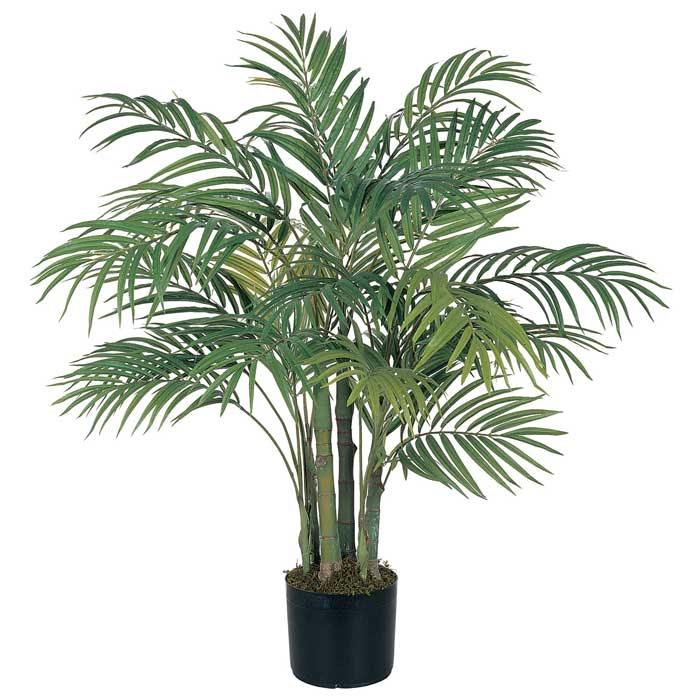
This plant is categorized under the Rhapis ecelsa group, which is characterized by broad, dark green fan-like foliage. While the various plants in this group have different environmental requirements, they are some of the easiest species to grow indoors.
The lady palm, in particular, is incredibly resilient and adapts well in numerous interior settings. It prefers mild sunlight and a temperature of 16-21C. This plant grows slowly, but it can reach over 14ft in height when grown outdoors but remains relatively small when nurtured in a pot.
Generally, Lady Palm is resistant to insect infestation, but it can sometimes get attacked by spider mites. However, these ants are easily removed using soapy water when caught early enough. Other care tips include ensuring that the plant’s soil doesn’t dry out excessively lest the leaves become brown and die. Tending for lady palm also entails watering it generously during the summer and spring. The amount of water should be increased in the winter especially if the plant is located in a warm, dry area.
While this plant loves a lot of moisture, it’s extremely important to ensure that it has proper drainage to avoid root rot. NASA found this plant to have incredible ability to eliminate indoor air pollutants like ammonia, toluene, formaldehyde, and xylene.
Peace Lily
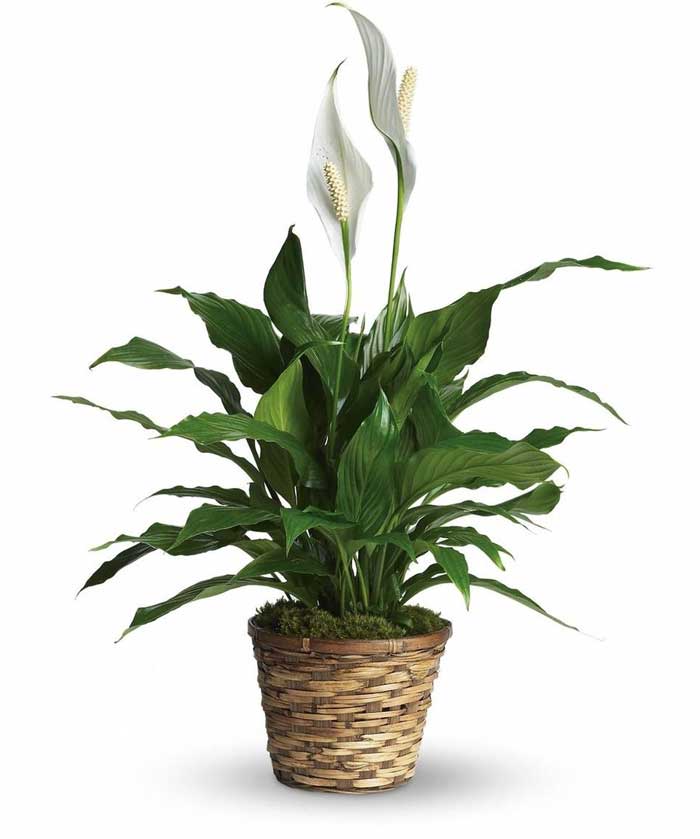
Also referred to as Spathiphyllum, this small plant is an excellent option when looking to eradicate volatile organic compounds and air pollutants like benzene, acetone, formaldehyde, alcohols, and trichloroethylene from the indoor space. Peace lily boasts a very high transpiration rate, which contributes to its air purification and humidification abilities. It’s characterized by glossy green leaves and stiff stalks. It also produces white flowers, which makes it one of the few tropical plants serving as a great addition in interior décor.
The peace lily is pretty compact as it grows to an optimal height of about 3 feet and a 2-foot spread. During the day, it requires temperatures ranging between 16 and 24C, with a slight decrease during the night.
This plant is also very hardy and tolerates neglect, making it one of the best plants to grow indoors. In fact, the plant requires minimal sunlight and little water. Growers should, however, ensure that they frequently mist the leaves with warm water to inhibit pests like spider mites and scale insects from attacking it.
While peace lily is perfect for growing indoors, it may also be used as ground cover, particularly in shady areas where grass has a hard time growing.
One downside of this beautiful plant is that its leaves contain calcium oxalate that’s toxic for both humans and pets. This means that the plant shouldn’t be ingested and ought to be placed out of kids’ and pets’ reach.
Boston Fern
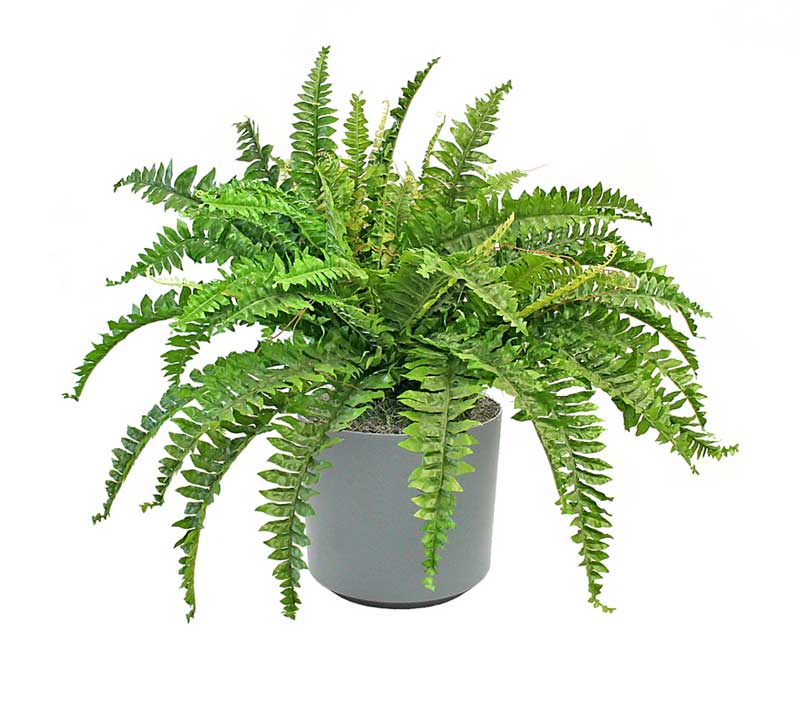
This plant is native to almost all parts of the world. It’s endowed with feathery evergreen foliage, which makes it an excellent indoor display when hanged or stowed in a pot over a pedestal. It grows up to 4 feet and spread for about 5ft. This plant prefers a bright but cool environment, preferably away from direct sunlight. Its ideal temperature ranges between 18-24C but should be relatively lower at night.
According to Dr. Bill Wolverton’s study, Boston fern boasts a high capacity to remove formaldehyde from the air. This renders the plant an integral addition to every home or office; formaldehyde appears in almost everything including facial tissues, plastic bags, adhesives, furniture, gas stoves, and tobacco smoke.
To cater for the plant, growers need to keep the soil moderately moist and ensure to spray the leaves frequently with warm water. Boston fern is susceptible to whitefly, aphids and spider mite infestation, but this can be controlled with soapy water.
It’s also extremely important to inspect new plants for bugs before bringing them indoors. Growers should also feed the plant with a liquid fertilizer every week especially when they begin producing new foliage.
The roots of the Boston fern should never dry out and needs always to be covered in hummus, which goes a long way in preventing water loss. Boston fern plants are somewhat pot-bound but they ought to be transferred to bigger containers when the roots begin to run through the pot or peek through the drainage holes. Repotting should, however, be done during spring; the season in which plants begin to grow actively.
Philodendron
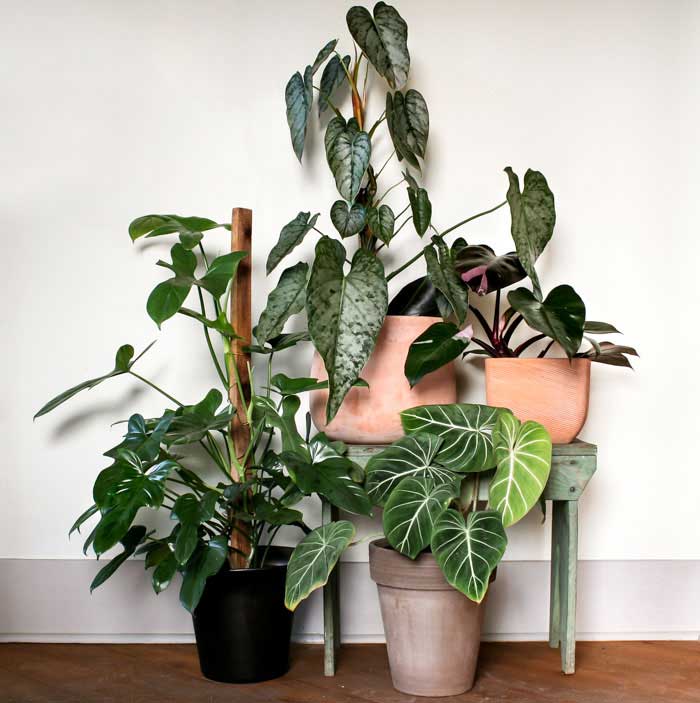
This is a large group of flowering plants belonging to the Araceae family. It has many plant varieties, but those topping the list of indoor purifiers include Lacy tree, Heart-leaf, Red Emerald, and elephant ear.
These are easy to grow and require little attention to thrive. Generally, philodendron prefers medium and low light intensity. The heart-leaf is undisputedly the most popular because of its ability to grow in different environments.
It can be placed in hanging baskets, which allows heart-shaped leaves and the stems to flow out of the container and create a beautiful bunch of foliage. Plants in this group can also be trained to climb a pole, mesh screen or a bark board.
Growers looking to obtain a more bushy appearance may pinch out some tips regularly, which prevents the plants from climbing too fast. Pinching the tips also allows the plants to grow healthier and look their tropical best. The plants should not be exposed to direct sunlight lest their growth becomes stunted.
Also, philodendrons need to be sprayed with mist regularly, and the leaves kept free of dust. They also prefer a temperature range of 16-21C; too much warmth will lead to their untimely death. The soil needs to be kept moderately moist but allowed to dry between watering. As they grow, the plants may be fed with a liquid fertilizer every two weeks. While this plant can remove formaldehyde from the indoor air, it’s also poisonous and should be kept in a place where kids and pets can’t reach.
Areca Palm
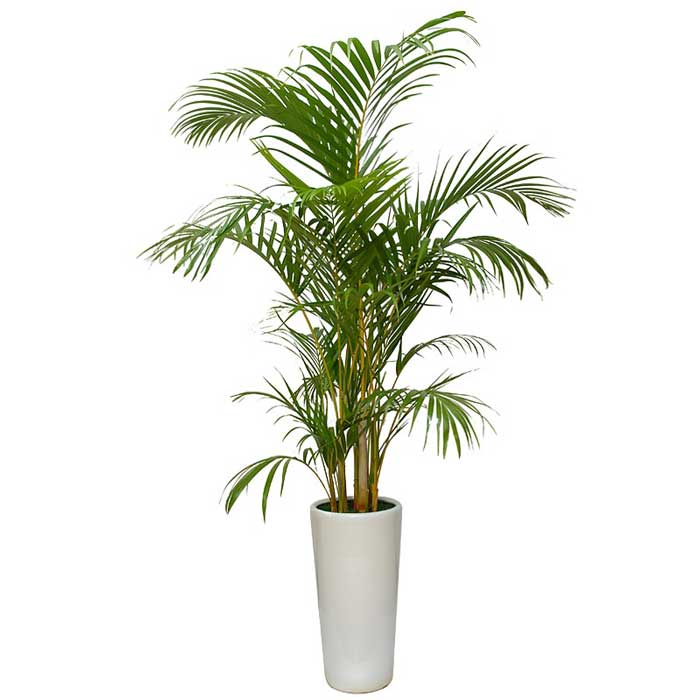
This type of plant is also known as a cane type palm owing to its bamboo looking stems that manifest after maturity. They also display the same leaflets as the feather type palm, particularly the Kentia.
The areca palm is an attractive species that prides itself in adding significantly to the interior décor of an office or home. In its natural environment, Areca palm grows above 10ft but can grow just above 5ft indoors. This height makes it an ideal choice for people who are seeking an indoor tree for both purification and aesthetic appeal.
Besides demanding a lot of light, areca palm is extremely easy to grow. It requires moderate watering and frequent misting to deter pests. When selecting one of these plants, it’s advisable to go for those with larger trunks from the base. This is because those having very thin stems tend to topple over.
While all plants are capable of purifying the indoor air, areca palm is notably more effective in removing xylene and toluene (dibutyl, phthalate, and formaldehyde) than any other plant. In addition to purifying the air, areca palm also produces large amounts of water vapor, which, in turn, helps to humidify the indoor space.
Snake Plant
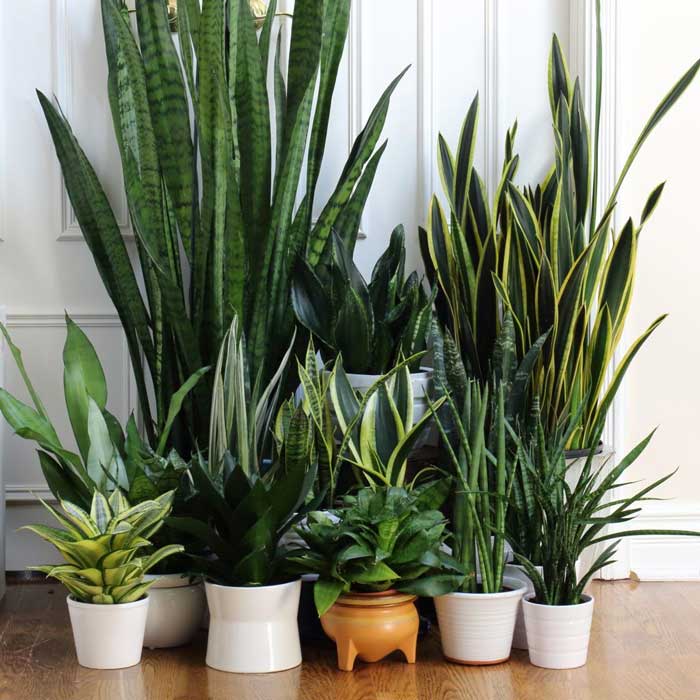
Also known as Sansevieria or mother-in-law’s tongue, this plant is extremely easy to maintain and hard to kill. It’s native to tropical Africa arguably the best houseplants for amateur growers who are also looking for a beautiful indoor display.
Snake plant thrives excellently in both bright and dark areas of the house. It’s is perfect for making group presentations and can also be used as floor or table displays. The snake plant feature stiff leaves that grow vertically. When mature, the leaves turn dark green with gray lines running across them. The plant can achieve a height of 6ft when provided with optimal conditions.
Snake plant is susceptible to mealybugs and spider mites attacks. Both pests suck its sap and thus causing small wounds that weaken the plant to the point of death. Mealybugs can be controlled by handpicking or drabbing with alcohol, while spider mites are best eliminated by cleaning the plant with soapy water and increasing humidity in the area where it’s grown.
Besides its beautiful display, the snake plant is excellent for absorbing airborne toxins like nitrogen oxide, benzene, formaldehyde, and xylene. This plant is also a great choice for placing in the bedroom as it provides a significant boost of oxygen. It may also be placed in the bathroom as it can thrive well and filter out pollutants effectively.
Chrysanthemums
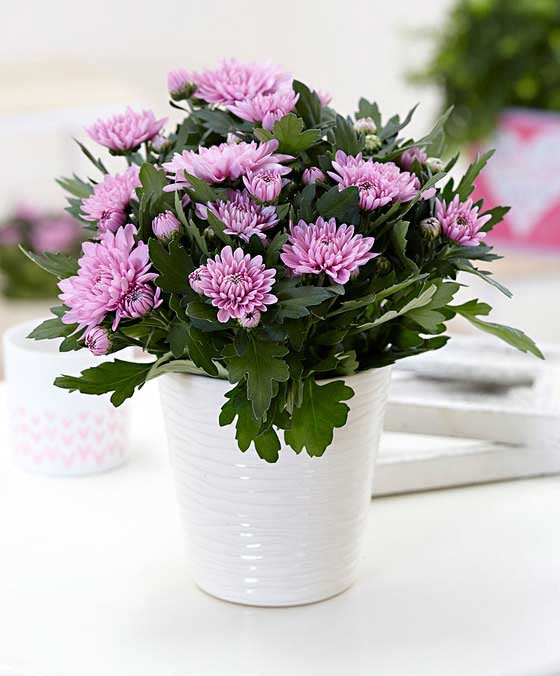
Also known as hardy garden mum or florist’s daisy, this tops the list of gorgeous house plants. It’s native to East Asia and produces beautiful blooms with countless shapes, colors, and sizes. Each plant is comprised of multiple flowers joined together by a central group of stalks. They reach about 12 inches in both height and spread. While they are mostly grown in gardens, chrysanthemums will also thrive perfectly indoors.
Some of the common pets that attack this plant include chrysanthemum aphids and spider mites, which can be controlled through the regular forceful spray of water and insecticidal soap respectively.
Not only do these blossoms brighten up an indoor space but they also cleanse the air off ammonia, xylene, toluene, formaldehyde, and trichloroethylene. This plant prefers direct sunlight and medium watering. While chrysanthemums aren’t heavy feeders, growers need to feed them a little compost or general-purpose fertilizer at the beginning of summer.
Spider Plant
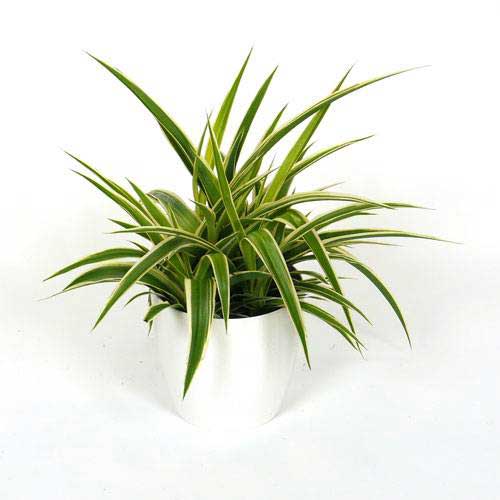
This is among the most popular and easiest plant to grow indoors; it’s exceptionally hardy and can thrive in less than perfect environmental conditions. Spider plants provide a stunning decorative element for the home’s interior. When mature, this plant forms beautiful arching leaves combined with plantlets that grow on long stems to create a somewhat green mane. It needs regular watering, but the water should be cut back during the winter.
Spider plant also requires to be fed with fertilizer or compost at the beginning of the growing season.
In spite of being extremely hardy, spider plant can be turned into dinner by several pests. These include whiteflies, mealybugs, spider mites, and flies. Spraying the plant with water can eliminate aphids and spider mites. However, the other pests may require the grower to use natural insecticides like neem, oil, soapy and garlic sprays.
Besides their beauty and ease of growing, spider plants are a power horse when it comes to air purification. They have been shown to quickly and effectively remove volatile organic compounds like benzene, carbon monoxide, xylene, and formaldehyde.
This plant is characterized by long, strap-like leaves that make it an ideal hanging plant. It’s best placed close to the kitchen or a fires place due to its ability to prevent the build-up of carbon dioxide.
English Ivy
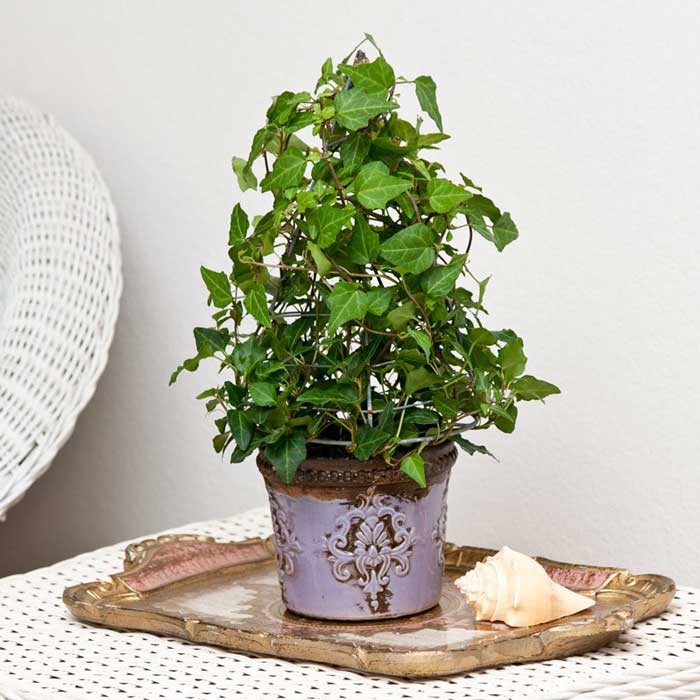
This plant is popularly seen on the exterior of buildings, but it’s also a lovely houseplant. English ivy is a beautiful climber that’s relatively easy to grow and look after. This plant looks great when its vines are dangling or hanging from a shelf, but it may also be trained to climb topiary.
While it’s native to Western Asia and Europe, this plant can thrive in low light and cold environments. It’s evergreen and creates an attractive wall or ground cover. When grown on the exterior walls, this plant helps to regulate temperature in the interior parts of the building.
Growing this plant indoors isn’t challenging at all; while it doesn’t grow aggressively like in an outdoor setting, English ivy still makes a beautiful houseplant. The plant should be placed on a pot, which should subsequently hang on the ceiling or placed on the shelf.
It requires to be fed with fertilizer or manure once in a while especially in the early spring. While growing, its vines protrude from the port and climb to nearby items, giving the space a natural green decorative touch. English ivy is, however, prone to attack from spider mites and aphids but these can be taken care of with soapy water.
According to NASA, growing English ivy indoors can significantly improve air quality as it helps in the removal of such toxins as Toluene, formaldehyde, benzene, and xylene. English ivy has also been shown to be an excellent mold removal agent.
Weeping Fig
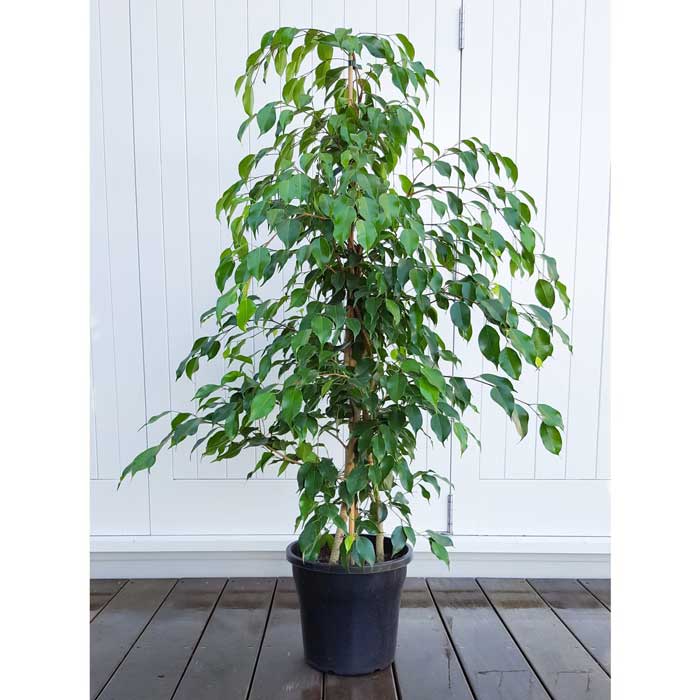
This elegant plant belongs to the Ficus genus species that is characterized by a large arching branch and long pointy leaves. It’s a popular indoor plant ideal for both office and home settings. This plant grows very dense with glossy dark foliage, and it’s the perfect choice for removing xylene, toluene, and formaldehyde.
In its natural habitat, weeping fig can grow over 60ft, but people who want to grow it indoors should train it as bonsai or prune it regularly to control the height.
Weeping fig requires a lot of light and a temperature range of between 65 to 70 degrees at night and 75 to 85 during the day. Its, however, imperative to find a perfect, permanent spot when placing the plant as it doesn’t like to be moved. It also needs steady moisture but shouldn’t be left to sit in water lest it drops its leaves. Since it’s a rapidly growing plant, weeping fig may require repotting especially when not intended to be Bonsai.
Weeping fig is a heavy feeder, which implies that it requires nourishing with plenty of fertilizer during the growing season. Feeding may also be supplemented with a small amount of magnesium or manganese particularly when it begins to lose its leaves. Growers should also watch out for pests like mealybugs, aphids, whitefly, and scale.
Flamingo Lily
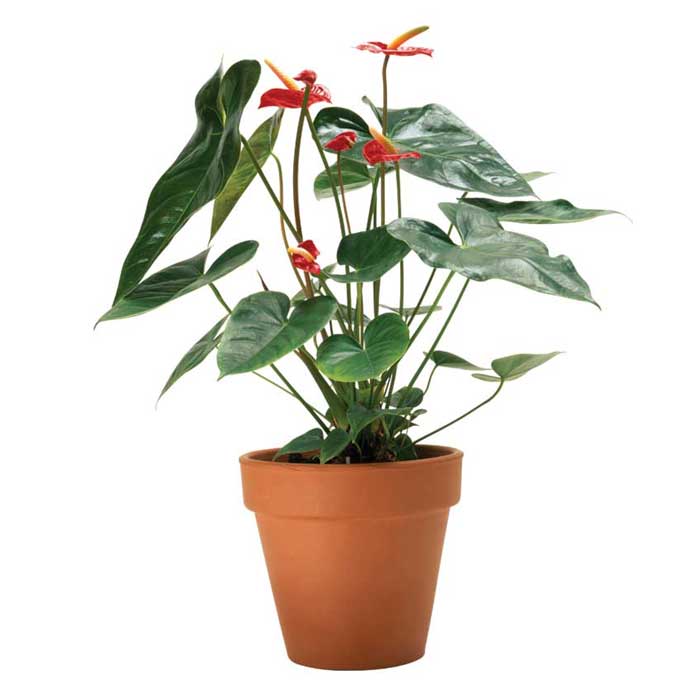
Endowed with red blooms and glossy green heart-shaped leaves, flamingo lily is among the most stunning flower plants you’ll encounter indoors. It’s also known as a painter’s palette and is an ideal choice for adding a touch of luxury to any indoor space. They also rid an indoor space of airborne pollutants like ammonia, xylene, toluene, and formaldehyde.
Although this flowering plant isn’t hard to grow indoors, it requires well-drained acid soil. It also prefers temperatures ranging between 16 and 32C. Growers should also ensure to keep the soil moist and feed the plant with fertilizer once every month.
The hardest part of growing flamingo lily indoors is presented by the fact that the plant requires a relative humidity of 50%; less than that it may die. Luckily people can use humidifiers to control and maintain the amount of moisture in an indoor space. The plants also love to soak in the rays of light but should not be placed in direct sunlight.
Flamingo lily is prone to common garden pests such as scales, aphids, mealybugs, gnats, and thrips. These can, however, be eliminated with soapy water and natural pesticides. It’s is also susceptible to blight and fungus, which can be controlled by watering it at the root and using liquid soap and baking soda. This plant is poisonous to humans and animals, and thus it shouldn’t be ingested.
Gerbera Daisy
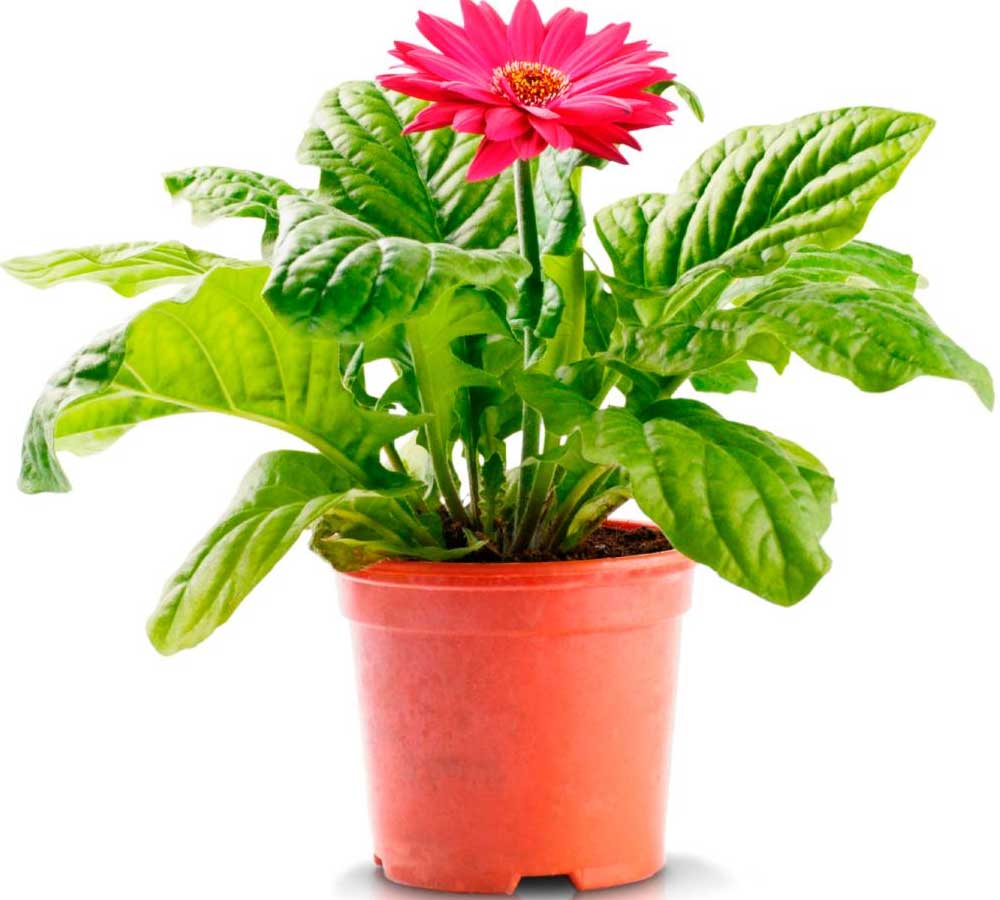
Also known as Transvaal, this plant is a real attention-seeker. It’s endowed with conspicuous blooms, short stems, and attractive evergreen foliage. Given that they have a single blooming season, these plants are often given out as gifts. However, if proper growing conditions are provided, the plant can survive for two, or even three years. Growing this plant indoors comes with an important advantage of eliminating benzene, trichloroethylene, and formaldehyde.
Gerbera daisy requires a weird combination of moderate temperatures and bright light. Placing it close to a sunny window may burn the plant out, but without light, there will be no blooming.
Bright, indirect light in the morning often works; however, growers should ensure to place the plant away from the window later in the day as the sun gets hotter. When there’s no sunlight, artificial lighting should be provided. Although they tolerate cool temperatures, they cannot survive in levels above 21C.
This plant should be watered 3 or 5 days a week depending on such factors as temperature change and humidity. It should also be fed with fertilizer regularly. Gerbera daisy is rarely affected by pests, but growers need to look out for mites and aphids, which can be controlled with insecticidal soap.
Indoor air isn’t as clean as it used to be; pollutants like VOCs and airborne biological pollutants from household items and industrial emissions have greatly altered its quality. These pollutants lead to sick building syndrome, which causes ailments like allergies, fatigue, nervous system disorder and even cancer.
Through a study by NASA, it has been discovered that plants like the ones mentioned above can naturally purify the air by getting rid of the common pollutants. For the most part, the above plants are easy to grow and care for and also contribute to the overall aesthetic appearance of an indoor space.
Related Buyer’s Guides
